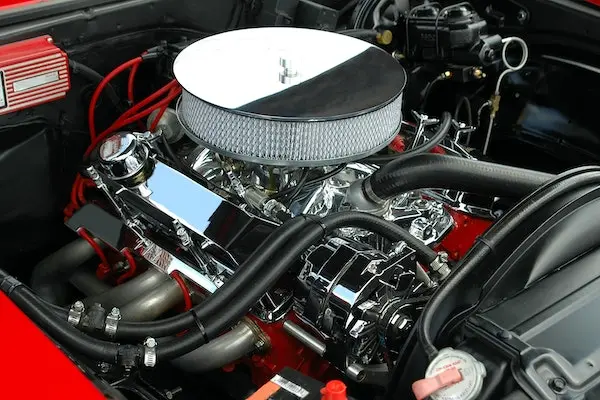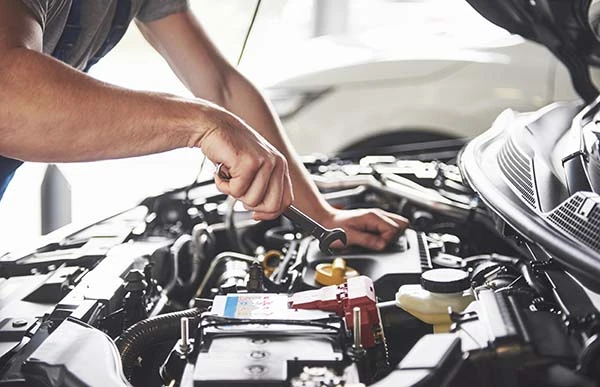It might feel like an embarrassing thing to mix up because you’ve done it so many times, but the truth is it’s a very common mistake. If you’ve just made this mistake or are just simply interested in what happens if you put the wrong gas in your car, here’s everything you need to know.
The most important thing is to correct this mistake as soon as possible and know what type of fuel you’ve just put into your car. There are combinations that won’t damage your vehicle and ones that will cause severe engine problems, such as putting gasoline in a vehicle that requires diesel. So, the results, as well as the best steps to take, vary from one situation to another.
The Results of This Mistake Vary Depending on the Kind of Fuel You Mixed Up
There are several possible scenarios that could happen, depending on what kind of mix-up you’ve made. It’s important to know what type of fuel you’ve added because it will point you to the right course of action to reduce the damage.
It’s Important to Know the Octane Number of Fuel You’ve Just Put In
You’ve definitely seen the different numbers each type of fuel has, but do you know what exactly they are referring to? These are so-called octane ratings, and they are standardized measures of fuel stability, so they act as indicators of different gasoline performance and properties.
These octane ratings are based on the pressure at which gas will spontaneously combust or auto-ignite in a testing engine. This means that the higher the number is, the more stable that type of fuel is and also more expensive. There are three main octane ratings of gasoline that are sold at retail gasoline stations in the US:
- Regular gas – the lowest octane fuel (about 87), generally for older vehicles,
- Midgrade gas – the middle-range octane fuel (about 89-90), suitable for newer vehicles,
- Premium gas – the highest octane fuel (about 91-94), generally for elite and sports cars.
Your Car Might Not Get Severely Damaged, but Poor Engine Performance Is Pretty Common
If the user manual states that you can use any fuel type, you will have no problems at all. But, if that’s not the case, don’t fall into despair – as I’ve said, this is a common mistake, and there are steps to take to minimize the damage. Your car is not going to end up with a salvage title or in the junkyard. Even when you’re able to drive safely and without any repairs, this is obviously not something you should do intentionally or on a regular basis.

Case-by-Case Overview of What Happens if You Put the Wrong Gas in Your Car
As I’ve mentioned, the results of this mistake, as well as the level of damage, depends on what kind of mix-up you’ve made. There could be no damage at all, or there could be more serious internal damage that will need a costly repair. So, let’s go over each scenario and talk about what you can expect:
What You Can Expect When You Mix up Diesel and Gas
Gas and diesel usually have very different nozzles at the gas station, so it’s hard to mix them up. But it can still happen, and this type of misfuelling can be very serious. You should treat it like poisoning and stop the spreading of it because diesel is toxic to gasoline fuel systems, and the other way around. Just like putting lower-grade octane fuel in a vehicle that requires premium gas is worse than doing vice versa, it’s usually worse to put gasoline in a diesel engine than to put diesel in a gas engine.
Diesel and Gasoline Engines Work in Different Ways, and That Can Cause a Lot of Problems
While these engines are similar in many ways, and both use a series of small explosions in order to convert fuel into energy, there is a significant difference in how these mini-explosions occur. Gasoline engines compress the mix of fuel and air, ignite it with a spark plug, and then exhaust it through the valve.
On the other hand, diesel engines rely only on compression to trigger the small explosions within, and that’s why they don’t require spark plugs. Diesel also has more lubricating properties, and attempting to run it only on gas can make things worse.

Your Car Won’t Explode but There Could Be Serious Damage
With all this talk about explosions, I want to underline that I’m not talking about a potentially fatal mistake for you, but only about the possibility of your vehicle having serious internal damage. The gasoline engine can explode prematurely before the spark plug ignites it, and this is called detonation.
Luckily, modern engines have built-in countermeasures against this happening. But there is still a possibility that it does, and then you can probably look forward to a hefty bill from your mechanic if they can even fix the damage.
Putting Diesel Into a Vehicle That Requires Gasoline Might Not be Fatal
When it comes to putting diesel into a gas-fueled vehicle, the damage is not so fatal, and it’s definitely the better option of the two. You will quickly notice a lot of smoke, and your vehicle will probably stop because the engine can’t process diesel, but that’s about it. The damage will not be permanent, but you’re looking at $500 to $1000 in repairs.
What Happens When You Put Gasoline Instead of Diesel
On the other hand, putting gasoline in a car that requires diesel is one of the worst possible scenarios. It can cause severe internal engine damage if you turn it on. As I’ve mentioned, diesel acts not only as a fuel but as a lubricant as well, and putting regular gas into it can cause serious damage to the fuel injector pump.
It is hard to tell what exactly you can expect since it could be the entire engine that is damaged or just the injection pump. So, the needed repairs will vary, and they could be costly depending on what needs to be done. You might need to have parts of the engine fixed, rebuilt, or replaced.

911: What to Do if You’ve Realized There’s Been a Mix-up
So, you’ve just got into your off-road driving vehicle, and you’re on your way to the gas station before you get on one of the most famous routes in the USA to have a little travel adventure. But unfortunately, there was a mix-up, and you’ve just realized the wrong type of fuel is in your tank.
No matter if you’ve read the user manual in its entirety or try to be as careful as you can while pumping the gas, it can still happen. This is such a small mistake, but it could potentially have very serious consequences depending on what you’ve mixed up. So, what is the smartest way to go about this situation?
If You Notice It While Filling the Tank, There Still Could Be Damage
As I’ve mentioned, mixing different octane grades will not be that serious, but if you’ve found yourself putting gas into diesel, then it’s still too late. The only thing you can do now is to try and minimize the damage.
Here’s what you should do:
- Immediately stop filling the tank,
- Disconnect your car battery,
- Call a tow truck to take it to the nearest mechanic.
Don’t Turn on the Engine Under Any Circumstances
Remember how I said that you should treat it like a poisoning situation? The moment your engine starts running, the contaminated fuel is spread throughout the whole system and engine, and the charge for your repairs will be huge. So, don’t turn on your vehicle, and you might be able to escape this scenario with a reasonable bill from the mechanic who will drain the tank, fuel rails, fuel lines, and injectors, as well as clean the entire system.
What to Do if You’re Already Driving
If your engine is already turned on and you’ve realized that you put the wrong fuel in the tank while driving, stay calm because a bad case of driving anxiety will only make matters worse. Pull over beside the road, and turn off the engine as soon as possible. The sooner the engine is turned off, the more likely it is that the damage will be minimized.
Once you’ve stopped the car, call a tow truck to transport it to the nearest auto mechanic and let the professionals take care of it. If the damage is reversible, he will drain the tank and flush the entire system or maybe change a few parts.

Trust the Professionals – There’s Nothing You Can Do on Your Own in This Situation
A common misconception is that your insurance can cover everything, but most of them specifically keep out the possibility of covering the costs of misfuelling. As I’ve mentioned, the bill you can expect from your mechanic after the job is done varies a lot depending on how severe the damage is. But there’s no point in trying to escape being charged by trying to fix it by yourself.
You might know how to change a flat tire, or how to replace a valve stem, but this is not something you can do on your own, trust me. It’s always better to leave it to the professionals.








